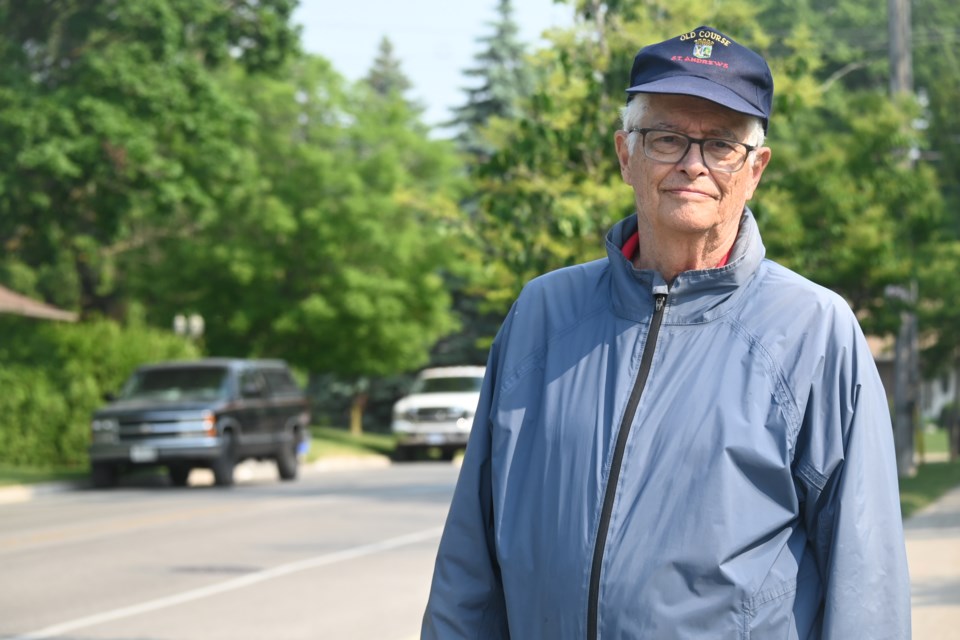Longtime Newmarket resident Harry Carter has seen traffic in town increase dramatically over the years.
Living on Avenue Road since 1965, he said the nearby intersection at Carol Avenue has become hazardous, especially during rush hour.
It has driven him and some of his neighbourhours to seek ways to sway the town to take more action there. Although he does not seek an all-way stop, he hopes some other measures could be put into place beyond the painted lines the town added on the side of Carol.
“They’ve got to get something done,” he said, adding that crossing the street has become increasingly challenging. “We’re really stuck down here.”
Many Newmarket communities seek ways to bring traffic controls and calming to their neighbourhoods, whether with stop signs or lighter measures. One community succeeded June 5 after more than four years of effort, with an all-way stop coming to William Roe and Dixon Boulevard due to an update in the Ontario Traffic Manual.
The town has a process to decide on traffic calming measures, dictated in part by that manual. The provincial document guides the placement of various signage in a given community, as well as what traffic and speeding thresholds warrant responses like stop signs.
Development and infrastructure services commissioner Peter Noehammer said recent updates allow municipalities to consider new factors when deciding on stop signs, such as types of accidents, intersection geometry and visibility. That allowed the municipality to proceed with more action at William Roe and Dixon, which slopes in both directions and has had associated accidents in recent years.
Stop sign consideration is generally done by members of council requesting investigations by staff. After that, staff will conduct a study and consult with households before coming back with recommendations.
For an all-way stop on local roads, the intersection must exceed 200 vehicles per hour for each of the highest four hours and has a combined vehicle and pedestrian volume exceeding 75 units per hour for volume on each of the minor streets.
But Noehammer said roads with notable other factors besides volumes and speeds may be able to get more all-way stop consideration with the manual update.
“This could be a good way of trying to improve the accuracy of determining whether or not an all-way stop is required,” Noehammer said.
The town has a step-by-step process for asking for other traffic-calming measures like traffic bollards or painted lines. Generally, it starts with a petition with 25 per cent support from the residents on a street, with a minimum of 10 households. That can be passed to a council member, who can bring it to a committee meeting for a vote to direct staff to investigate.
Assuming that the vote passes, staff will review engineering and survey all affected households about a proposed change, with at least a 50 per cent response rate required showing a 60 per cent positive response.
“As long as they meet the requirements in our policy, we can start to review what’s appropriate,” Noehammer said.
Beyond permanent signage, measures the town has at its disposal include bollards, radar speed boards, urban shoulders (painted lines at the side of roads) lawn signs and more.
As far as Carol Avenue, Noehammer said it is a connector street that is getting traffic flowing onto Eagle Street. But he said construction finishing up on Lorne Avenue should help ease traffic on the road, but they will be conducting traffic counts in the fall to confirm that.
“We’re trying to always look at continuous improvement,” Noehammer said. “We are trying to facilitate the best form of traffic control that we can with safety in mind.”
Carter said he has been in communication with the town and informed about the petition requirement.
“Anything we can do to make this intersection safe, that’s the crucial point,” he said. “That probably means things have got to slow down a little."
A complete breakdown of making requests for traffic measures is available on the municipal website.

